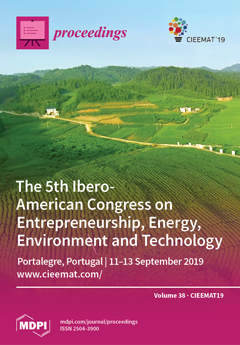Proceedings, 2019, CIEEMAT 2019
The 5th Ibero-American Congress on Entrepreneurship, Energy, Environment and Technology - CIEEMAT 2019
Portalegre, Portugal | 11-13 September 2019
Volume Editors:
Paulo Brito, Polytechnic Institute of Portalegre, Portugal
Ronney Arismel Macncebo Boloy, Centro Federal de Educação Tecnológica Celso Suckow da Fonseca (CEFET/RJ), Brazil
Luis Pais, Universidade do Porto, Portugal
José Luis Calvo Rolle, University of A Coruña, Spain
Ramon Sanguino-Galvan, University of Extremadura, Spain
João Leitão, University of Lisbon, Portugal
Monica Martins, Theorem Conferences, UK
- Issues are regarded as officially published after their release is announced to the table of contents alert mailing list.
- You may sign up for e-mail alerts to receive table of contents of newly released issues.
- PDF is the official format for papers published in both, html and pdf forms. To view the papers in pdf format, click on the "PDF Full-text" link, and use the free Adobe Reader to open them.



